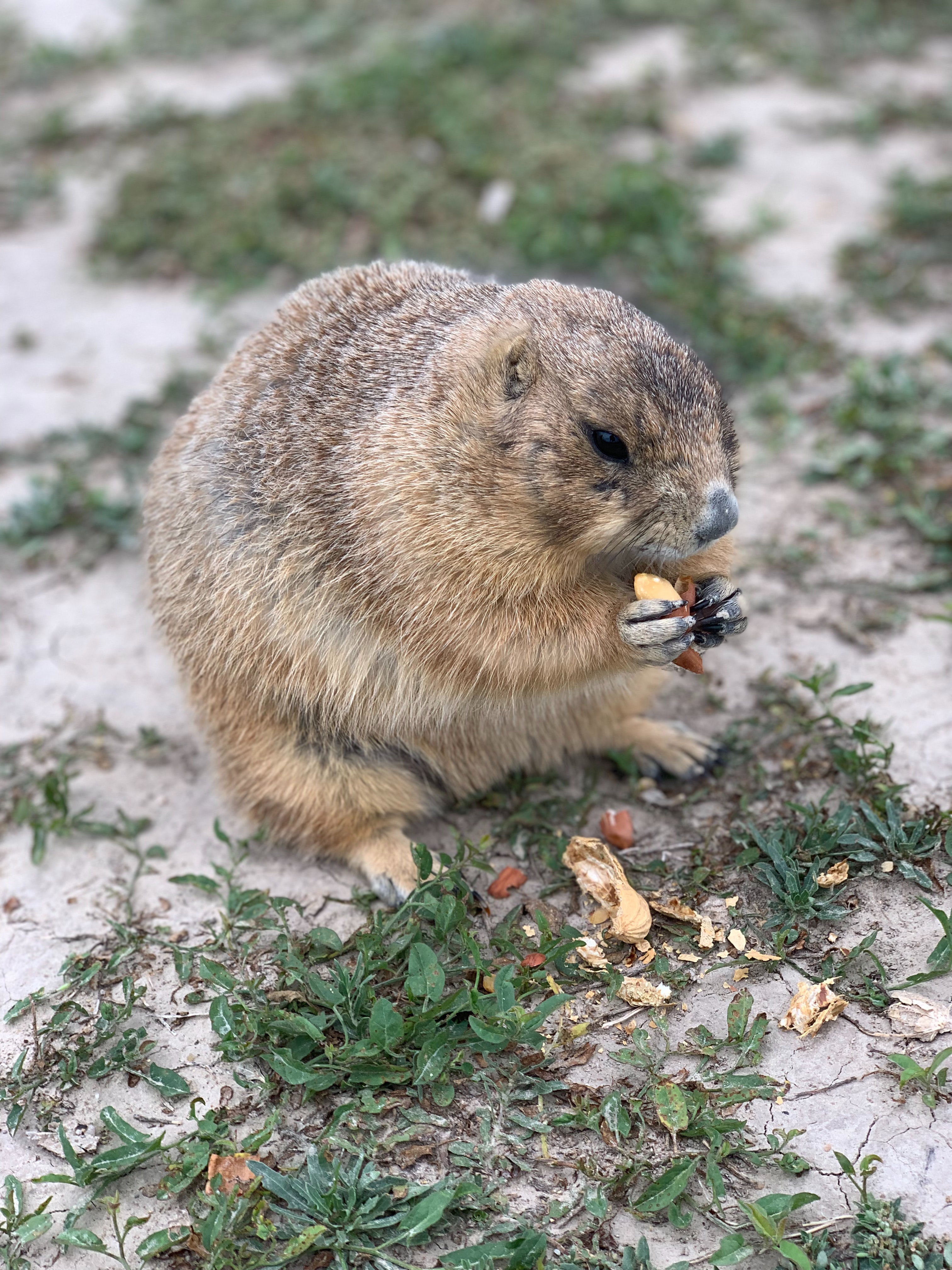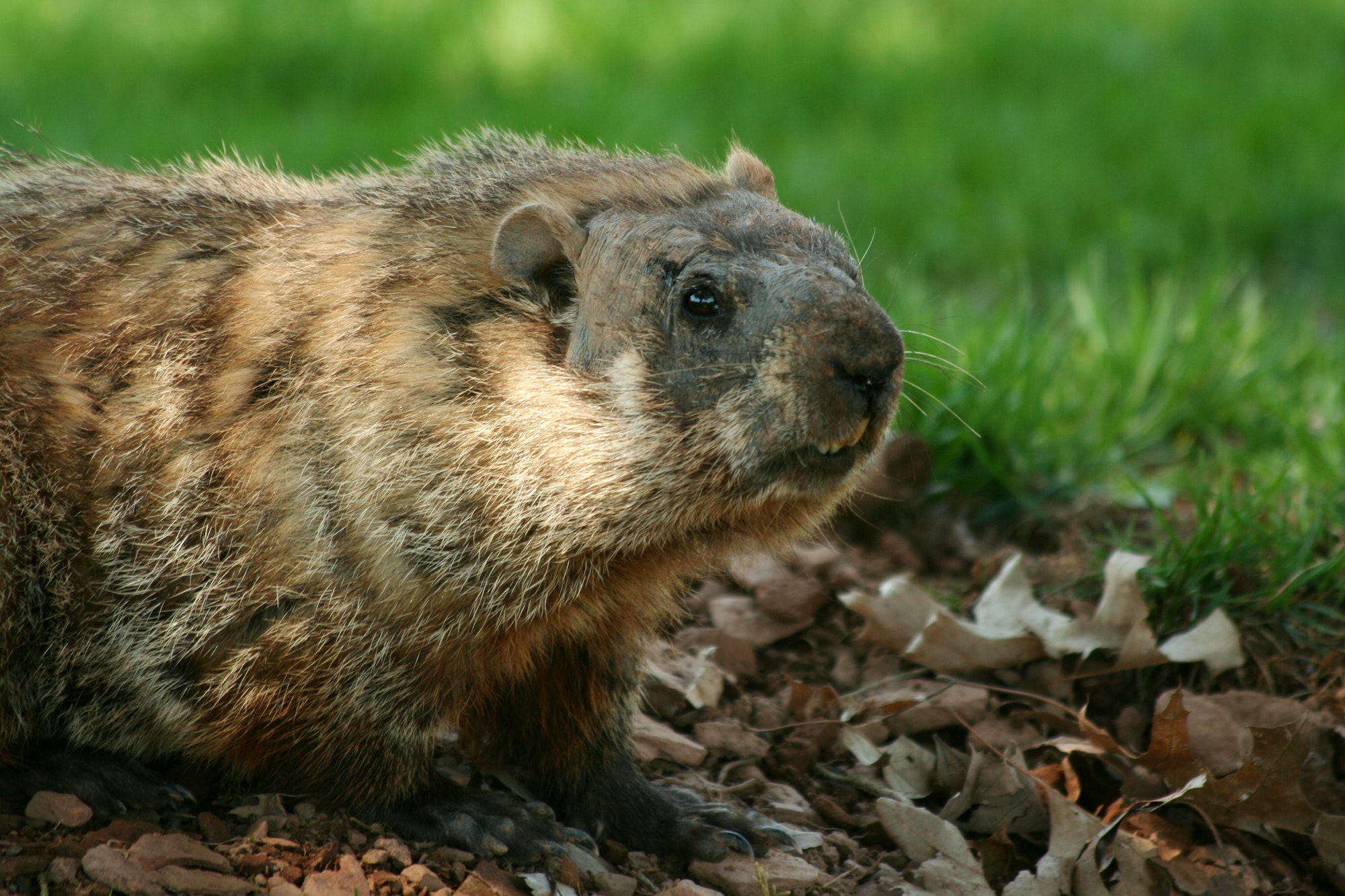What Are Woodchucks?
Another name for a woodchuck is a groundhog. Woodchucks are closely related to squirrels. Adult woodchucks are about 16 to 22 inches long and weigh between 5 – 13 pounds. Woodchucks have dense bodies covered in brownish-gray fur with a small tail. Their life span is about three to six years, but they live longer in captivity. Woodchucks are really clean animals and are resistant to diseases that infect and kill other animals. Woodchucks still get rabies though. Woodchuck population grows quite rapidly because the gestation period for a woodchuck is 32 days and they typically have six kits in a litter.
Woodchucks are very active during summer days. If they are not eating, they are either laying or sleeping in the sun. Woodchucks are mainly vegetarians but will occasionally eat insects.

Woodchucks will eat a variety of grasses and chickweeds, clover, plantains, and many varieties of wild and cultivated flowers. They like to eat fruits like blackberries, raspberries, and cherries. They may be seen eating grasshoppers, June bugs, and other large insects.
Woodchucks start to eat a lot of food in late summer to prepare for hibernation. Woodchucks hibernate from October through March. As a woodchuck hibernates its body temperature drops from 99 degree Fahrenheit to 40 degrees Fahrenheit. Also, their heart beats will drop from 100 beats per minute to only 4 beats per minute.
Woodchucks live in the western and eastern regions of the United States. For their habitat, woodchucks live in burrows. The burrows are about two to six feet deep and can spread up to 40 feet. There are many different levels and chambers with specific functions like nesting, waste, etc. The main entrance can be identified by a large mound of dirt next to the hole. There are several other holes to enter the burrow.

Woodchucks have their benefits in nature. The first thing is that woodchucks help with soil health. Rainwater is able to infiltrate into different levels of the soil and the rainwater can help refill both unconfined and confined aquifers because of the burrows. While burrowing, woodchucks bring humus into the different levels of the soil which helps the soil horizons.
Second, woodchucks also help the biological properties of the soil by mixing nutrients in the soil while burrowing. Also, woodchucks create homes for other animals because once woodchucks leave their burrows new animals inhabit them. Third, woodchucks are a natural pest control for insects by eating them.
Even though woodchucks provide helpful factors to the soil, woodchucks are considered pests to many farmers and gardeners. Woodchucks cause damage to the produce being grown. Woodchucks can destroy flowers and flower beds. The woodchucks’ burrows are also damaging because they tend to burrow under foundations of buildings. While burrowing, they create unwanted holes in lawns and can create power outages by chewing on electrical wires.
There are many ways to remove woodchucks. The most common way people remove woodchucks is by trapping them by using a cage and relocating them. Also for trapping, people can call a professional to deal with the pest situation. Another way to get rid of woodchuck is to spray your yard with a repellent you can buy at a store. There are also some DIY ways to remove woodchucks. One way is to use blood meal (dried animal blood). Blood meal will repel woodchucks because of its smell, but it will also help fertilize your yard. Another way is to use talcum powder. The scent and presence of talcum powder repels woodchucks and will not hurt the growth of vegetation.
Even though many people see woodchucks as pest because of their destruction, some may see woodchucks as an environmental friend.








